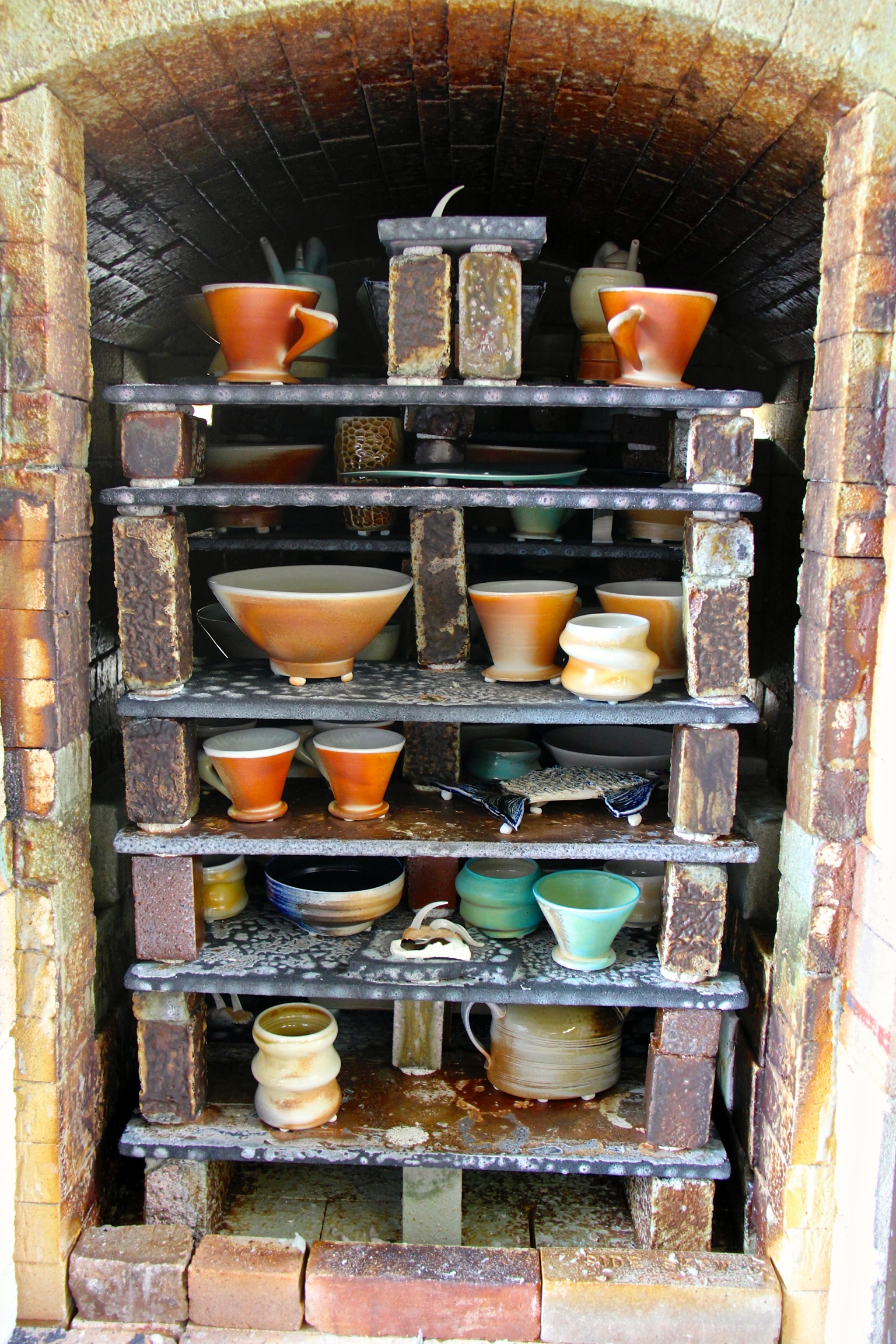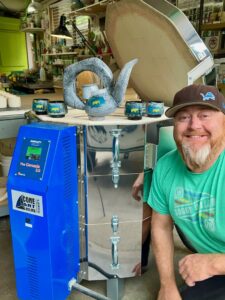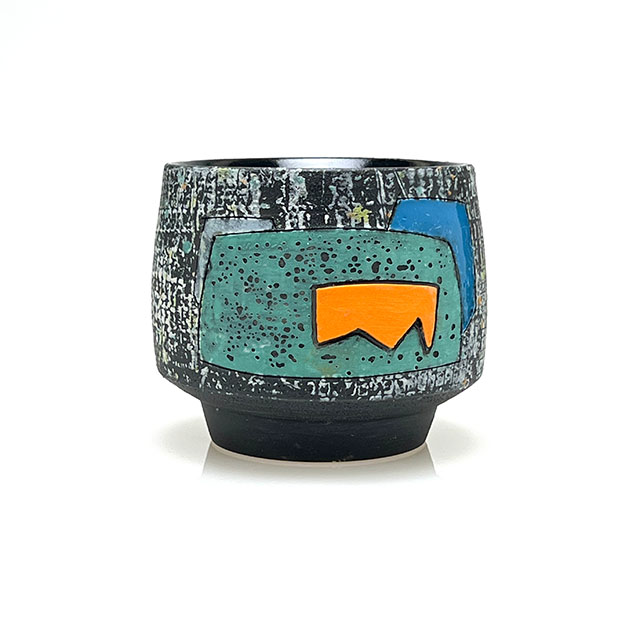Finely crafted soda fired porcelain

My name is Jamie Kelly and I’m a ceramic artist living in Denver, Colorado. Art has always been a part of my life, I was raised surrounded by it. From a young age, I always have been drawn to handmade creations. I first was really exposed to ceramics in high school. We had a great fully functional ceramics department that truly is where I fell in love with clay. From there I attended Northern Michigan University and received my BFA in ceramics graduating in 2001.
Then life happened, I was young and looking for adventure. I decided to move to Colorado with a friend. My connection with clay took a back seat to living life and trying to make ends meet. I spent a decade away from clay doing all sorts of jobs from waiting tables to installing hardwood floors.
It wasn’t until 2011 when I found the Colorado Potters Guild and I applied to become a member. I was accepted and began rekindling my love for ceramics. Shortly thereafter I met my beautiful wife. We were married in 2013 and and have since bought a house. We converted our garage into my studio and since then I’ve been working to develop my work into something I feel is good enough share with the world.
LETS TALK ABOUT THE PROCESS
My process involves many steps to end up with a finished product. I start by using either a white porcelain clay body or a brownish stoneware clay depending on how I intend to fire them and what I intend to make.
The porcelain is fired at my home studio in an electric kiln and allows for a rainbow of bright color options and they are fired to cone 6 about 2220 F.
The stoneware is fired in a large gas fired soda kiln to cone 10 about 2350 F at the Colorado Potters Guild a community studio I’ve been a member of since 2011.
Soda firing is a process where near the end of our firing near peak temperature we introduce soda ash dissolved in water and spray it into the kiln to create atmospheric effects that create unpredictable unique surfaces usually with lots of earthy tones like oranges, yellows, and browns. This unpredictability is what makes the process fun and sometimes frustrating at the same time, whereas the work fired in the electric kiln is far more predictable and controllable.
I enjoy having several different ways to finish my work to keep it interesting and to keep the ideas evolving. I make pots mainly either by throwing them on the wheel or hand building using slabs of clay, or sometimes using a combination of both. Most of the work is decorated by layering various colored clay slips, underglaze transfer designs, and colored clay additions all done while the clay is still partially wet, a stage known as leather hard.
Once the pots have dried completely they are bisque fired to cone 04 about 1900 F this allows them to be fired enough to accept glaze without the water in the glaze breaking the pot apart.
Glaze is then applied to the inside of the pot and on various areas on the outside as well. This process will seal those areas where food and beverages come in direct contact. Once all the glaze is applied they go into their final firing.
The final step once they are out of their various kilns is to do a final sand and polish on the feet of the pots to make them sit flat and to smooth them so they won’t scratch your nice wood furniture. This process involves using diamond sanding pads with grits starting at 120 grit and going all the way up to 3500 grit to give the feet a countertop polished finish which feels lovely to the touch. Then they are finally ready to used and enjoyed!


